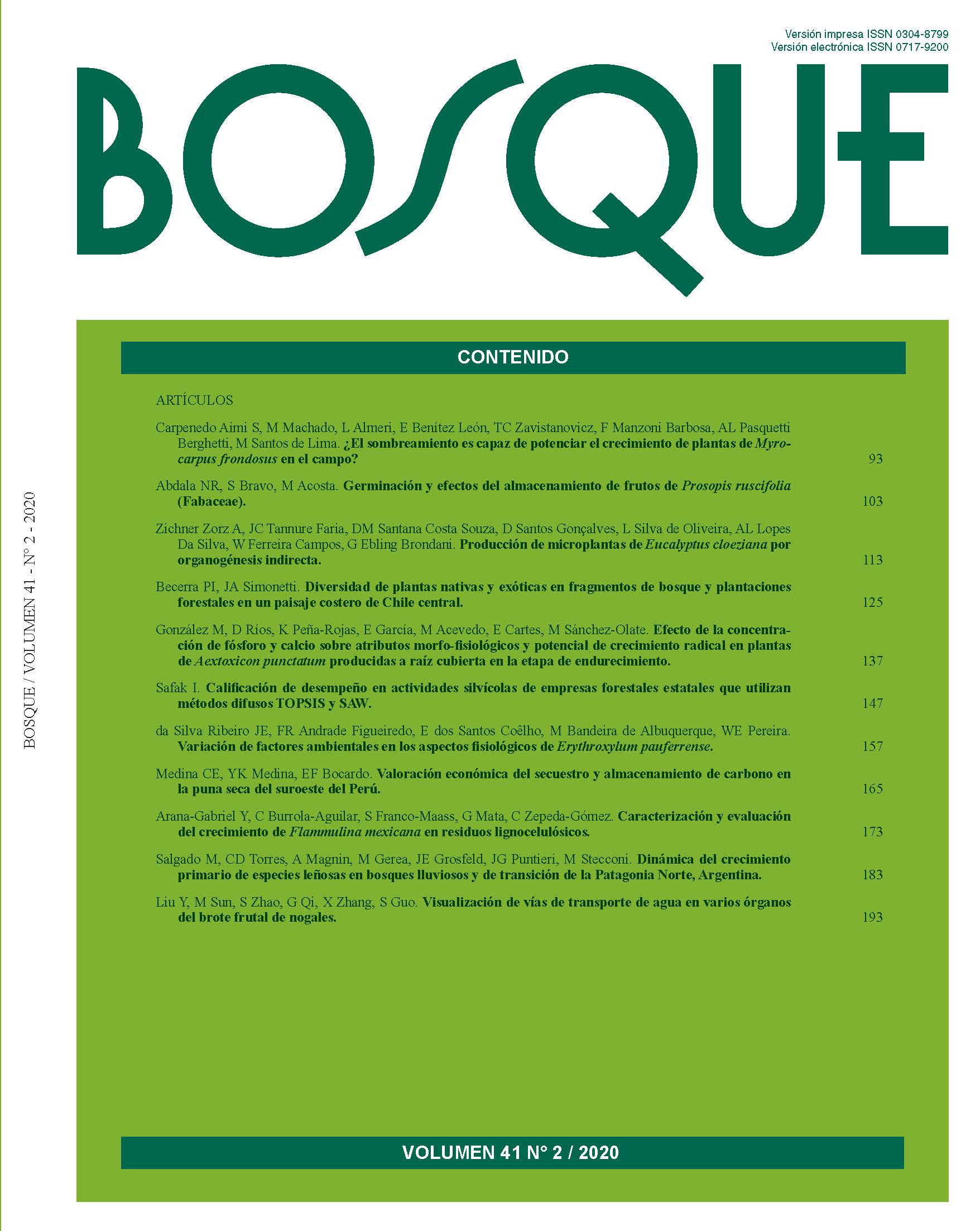Microplants production of Eucalyptus cloeziana from indirect organogenesis
Conteúdo do artigo principal
Resumo
Few studies have focused on the in vitro multiplication methods for Eucalyptus cloeziana. In this work we developed an indirect organogenesis protocol to obtain micropropagated plants. The interactions of plant growth regulators in juvenile tissues were evaluated. Hypocotyl, cotyledon and root tissues obtained from in vitro germinated seedlings were subjected to combinations of α-naphthaleneacetic acid (NAA), thidiazuron (TDZ) and 2,4-dichlorophenoxyacetic acid (2,4-D). In vitro callogenesis, adventitious bud induction, shoot elongation, and ex vitro survival and rooting were evaluated. Callogenic structures were observed in all evaluated tissues. Morphogenic characteristics related to the meristematic center was observed. The tissues that presented the callus mass were subcultured in a regeneration culture medium supplemented with 1.0 mg L-1 of 6-benzylaminopurine (BAP). Only hypocotyl and cotyledon induced adventitious bud and shoot elongation. Hypocotyl subjected to 2.0 mg L-1 TDZ had the highest number of elongated shoots. The two tissues (i.e., hypocotyl and cotyledon) combined with thidiazuron were characterized by the ex vitro survival of microcuttings and by adventitious rooting. Results confirmed tissue culture efficiency for microplants production by indirect organogenesis from hypocotyl and cotyledon cultivated with TDZ, and its implementation can be an alternative for forest tree breeding programs of E. cloeziana.

